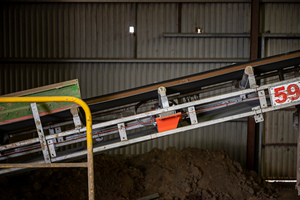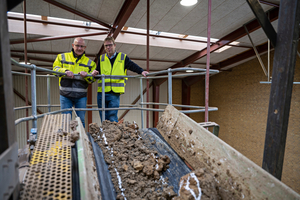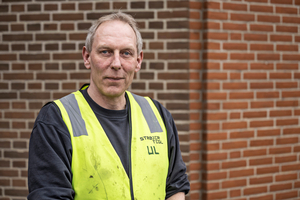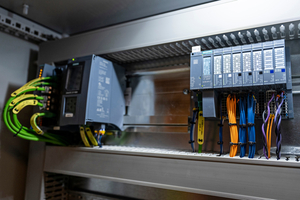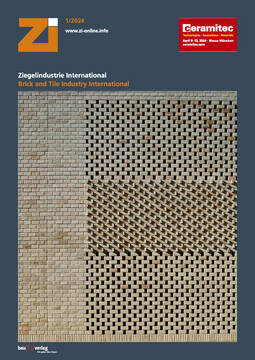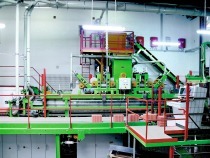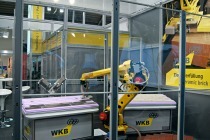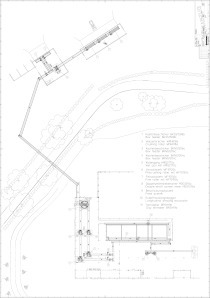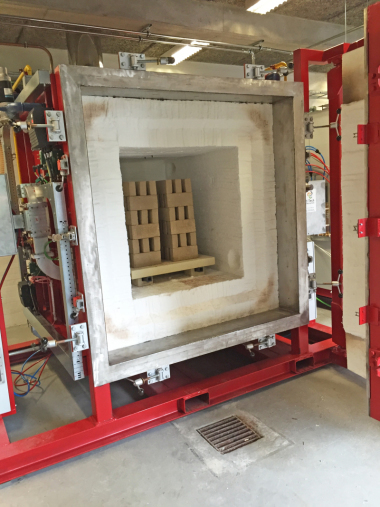With the right mix you get the perfect bricks
Large lumps of clay on constantly moving conveyor belts are accurately weighed so Danish building material producer Strøjer Tegl can produce bricks of the highest quality. New weighing electronics from Siemens, Siwarex WP341, ensure that the mixing of clay is precise. This is the first application of this new weighing electronics.
At Strøjer Tegl, they have combined one of the world‘s oldest production methods with some of the most modern weighing technology you can get today.
The brickworks in Assens, Denmark, has been producing bricks since the mid-1800s. Back then, it was seasonal work, but today it‘s an almost fully automated process that produces bricks from 555 tons of clay per day, seven days a week.
The star of this story is in the hall where the raw clay is automatically shoveled onto conveyor belts and starts the journey from clay to brick. The star is only 20 millimeters wide, sits safely and securely in the electrical panel and bears the name Siwarex WP341.
Behind that name is a weighing electrconics that is pre-wired to scales under each conveyor belt and is also fully integrated with the Simatic S7-1500 PLC/CPUs and ET 200SP nodes that Strøjer Tegl uses to control production. The full integration brings many benefits, especially in the communication between the different devices.
Compensating for the partner
The bricks are produced from two different types of clay, red clay and blue clay, and the mixing ratio affects the color of the bricks, among other things. Therefore, it is important to know how much of each type of clay the bucket puts on the conveyor belt.
It sounds simple enough, but clay tends to settle in clumps, so a look at the monitoring shows fluctuations of several hundred kilograms almost every second.
„If one conveyor belt has to deliver 80 percent of the clay and produce 50 tons per hour, our old system could ensure this by increasing and decreasing the speed of the belt. But the old system couldn‘t compensate for the other conveyor belt, and the new one can. So, if one conveyor is dosing more or less, the other one compensates and turns it up or down, and this ensures a much more homogeneous mix of the clay,” says Ulrik Lei, Automation Engineer at Strøjer Tegl.
This part will be especially important in the next stage of the project. While a test is currently being run at a smaller production plant, the second stage will be at the main plant, where the scales must also be able to dose the addition of sand and sawdust.
„Sand is the most important factor besides the clay, and the amount must be adjusted according to how wet the clay is, among other things. Producing bricks is a craft where the most skilled craftsmen can actually taste the clay to determine how much sand and sawdust to add. With our new system, it‘s much easier to dose automatically because we can fine-tune the amount of clay and know exactly how much clay is coming through at all times,“ says Ulrik Lei.
Integration and easier programming
The automation and programming was done by Strøjer Tegl‘s long-standing partner Industri-Automatik from Gråsten. The company has several specialists in brickworks, and owner Rune Cordsen is one of them. His argument for using Siwarex WP341 was precisely the fully integrated communication: „We used to have a different weighing system on top of the Siemens system that controls the machines. The weighing system received signals and could start and stop weighing. Now we have a weighing system integrated into SIMATIC S7-1500 PLC/CPU, and we wanted to keep it in the decentralized ET200 SP system. This is a big advantage because we now work in the same system, whether we are working at the plant or in the weighing system. It‘s the same software and development platform, and the integration with the plant management system means that we have more peace of mind in the plant.“
These are messages that Ulrik Lei both agrees with and adds to.
„Stage two runs from 6 am to 11 pm seven days a week, and there is simply no time for the system to ‚fault and shut down‘. So one thing is that the system runs more stable, but we have also unified it so that the entire signal package runs on the same PLC/CPU with failsafe. Therefore, we don‘t need to have different PLC/CPUs in stock, but can make do with just one or two. This saves money and we can get back up and running quickly if something goes wrong,“ he says.
Ordered before the electronics were on the market
Industri-Automatik is well versed in both weighing and equipment from Siemens. Since upgrading Strøjer Tegl to the Simatic S7-1500 series, they have been keeping an eye on when the new weighing electronics would be launched. As a result, their contact person at Siemens in Denmark, product specialist Jesper Juul Jørgensen, managed to place an order for 10 units even before the maps were officially on the market.
As with all new components, there is a risk of teething problems, which is why Strøjer Tegl was visited by specialists from Siemens in Germany, who went through the project with them and gave them a thorough introduction to the weighing electronics. In addition, there was a direct hotline to the specialists in Germany - but it was never used.
„From the initial talk that new electronics was on the way, it‘s been a really good process. The software for the WP341 is much easier to use than what we have worked with before, and there is a webserver integrated for setting up parameters, which makes a difference. We were also introduced to new features, with the calibration part being particularly good. It logs the time and number of times you‘ve calibrated, and then uses artificial intelligence to look at its own history and calculate the average. This also helps to constantly dose correctly,“ says Rune Cordsen.
With its 20 millimeters width and 65 millimeters height, the weighing electronics does not take up much space in the huge brickworks, where up to 20 trucks unload clay every day and where the drying kilns with their 1000 degrees Celsius stand side by side in the over 100 meter long factory hall. But with the accurate measurements, the module is now an important part of ensuring that Strøjer Tegl can continue to deliver high-quality bricks and tiles in the desired shades quickly and efficiently.

